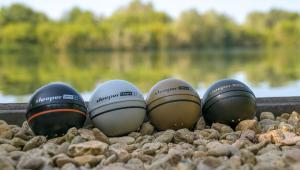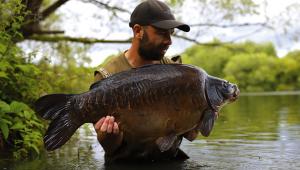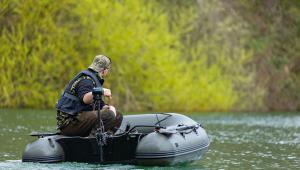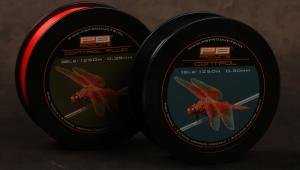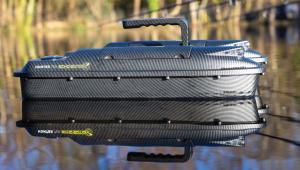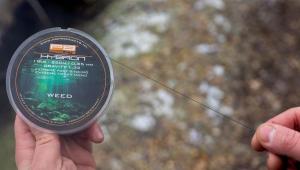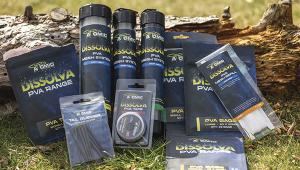Keep Catching This Winter
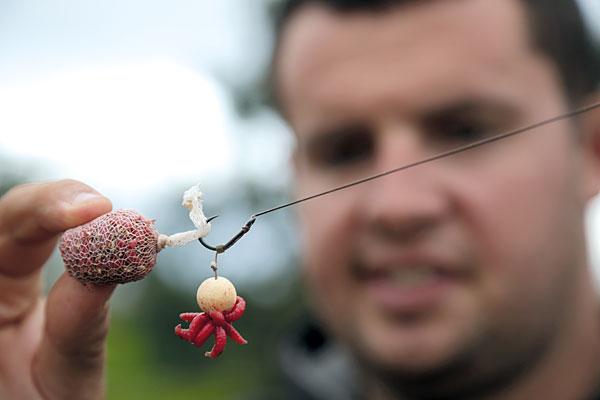
I am an avid user of bait at all times of the year and it forms the main basis of my angling. At times though, particularly in the really cold weather, the fish will really slow down and won’t be looking for food as much. It can often be very dependent on the conditions, and if they are not very active I will change my tactics to fishing with just bags.
There has been a lot said on solid bags over the years but while out and about fishing a variety of waters, I’ve noticed people rarely use them. They are without doubt in my mind the most effective way of fishing. The only reason why I don’t do it all the time is the time it takes to make them.
A lot of my fishing is done over bait as I have mentioned and don’t necessarily need them. There are times though, particularly this time of year, when you don’t want too much bait and the solid bag offers a small pile of food, which is often enough to get a bite.
Tom has plenty of spare rigs ready in case he wants to switch tactics.
One of the main advantages of fishing them is that the rig is pretty much always fishing. It doesn’t really matter if it lands on gravel, silt or weed, the rig is closed into the bag and, when it melts, the hook bait won’t be snarled up in anything to hinder your presentation.
Due to the way that I tie them and the mix that I use, the bag is extremely heavy too, which enables me to fish them at range. If you are fishing a bigger lake this winter, you will find that the fish often migrate to the middle of the pond.
Being able to tie a bag with enough weight that’s aerodynamically right is key. I use a 2oz lead, because by the time the mix is put in the bag, you are looking at around 4 to 4½oz. This will give you enough weight to cast at range, or if you are fishing closer the bag will fly true and won’t sway around, which can happen with poorly tied bags.
An inline lead with a supple hook link is suited for bag fishing.
Being able to tie a bag with enough weight that’s aerodynamically right is key. I use a 2oz lead, because by the time the mix is put in the bag, you are looking at around 4 to 4½oz. This will give you enough weight to cast at range, or if you are fishing closer the bag will fly true and won’t sway around, which can happen with poorly tied bags.
The key to making a good bag is all in the mix. You want it full of small items, so that the number of gaps and air in the bag is at a minimum. You want a rock-hard ball and to do this, small items are vital.
I start off by mixing up some 4mm or 2.3mm Manilla pellets, with some active mix and matching glug. I give them all a good mix around until the mix will hold together when I squeeze it but break apart easily. What the liquid will do is firstly allow the powders to latch on to the pellets. It will also add weight to the mix, which is what we want.
I start off by adding a small amount of the mix to the bottom of the bag. I then add the hook link, with the hook bait going in one of the corners. I then add some more of the mix and then place the lead on top of it, compacting as I make it. The lead wants to be central to allow the bag to fly better.
I then add some crumbed Manilla boilies and some more of the mix. Once near the top, compact it all down and then twist it and tie it off with some PVA tape. I then lick and stick the corners, folding them in to make the bag more aerodynamic.
To give the bag a further boost and send even more food signals out there, I inject the bag with some hemp oil. The oil will send those attractors to the surface and the hemp oil doesn’t congeal in the cold water, allowing it to disperse easily. I have noticed that by injecting bags with liquids such as hemp oil, I get much quicker bites.
Injecting the bag with oil gives it a huge amount of attraction.
I use a short length of leadcore, which enables me to loop my leader on to it, helping me change the leader quickly. This means that I can have a number of bags tied up, even some with different coloured hook baits to try, allowing me to do it quickly and minimise the time the rod is out the water.
It is important to use a supple hook link within the bag, as it will be able to coil up inside. A coated hook link has the chance of poking up outside the pile of food and become too obvious and doesn’t give you the best presentation.
In terms of hook baits, I like something small and bright. The key is to have it set as either a pop-up or a wafter. When the carp home in on that parcel of food, they will drop down and suck at the bag. If you have something bright, I am sure that is what they go for first. If it isn’t, then having something light will help fly into the carp’s mouth. That is another reason for having that supple hook link; the flexibility will allow the hook bait to do so.
Bright and small wafters make ideal hook baits.
I have been playing around with the Signature Squid wafters for a while and not only are the colours a winner, I feel that the contrast of fishy smell around that pile of sweet food is something extra for the fish to home in on.
Shows can be few and far between at this time of year but if I am lucky enough to see a couple of fish in an area, I am more than happy to cast three bags to the area and leave them until I see an opportunity elsewhere. Those beacons of attraction are enough to get a bite from them and quite often at this time of year that is all that I am looking for.
If I feel there is an opportunity of a hit, due to the stock of the venue that I am fishing, I will introduce some bait if I feel that the fish are feeding. This brings me back to the conditions; if they are warm and consistent, quite often you can catch a number of fish over a baited area.
It is important though, to not go too heavy with the bait, just a small amount to start with and introduce a little more should you get a couple of bites. I like a mix to be visual and easily digestible. Baits such as hemp, corn, some chopped peanuts and Manilla boilies are ideal.
When you look at the mix on the bottom, it is extremely visual and there are enough small food items down there to keep the fish occupied, meaning you don’t need a lot of bait. Just four of five Spombs is enough to get some smell and taste down there and any fish passing by will clock the beacon of food.
Sometimes the fishing can get really hard and switching it round can tempt a bite. That may mean altering the rig, changing the colour of the hook bait or of course moving swims. One tactic that always serves me well in the depths of winter is fishing small mesh bags of maggots.
Keep the maggots fresh and dry with a bit of powder.
They are without doubt one of the greatest winter baits of all time and the trick with maggots is that you don’t actually need a lot of them. Whether you have 100 or 1,000 maggots on a spot, the fish are aware that they are there and will investigate if they want to. This makes small mesh bags extremely effective and I normally always carry a pint or two with me on a session.
I like to use them alive, as they will move slowly in the water; not enough to wriggle off, but enough to trigger that predatory instinct from the carp. By fishing bags you are not committing a lot of bait to one area, you can recast to different zones and feel free to put rigs on active fish, instead of being committed to one spot.
In the colder months the fish won’t always be actively searching out food, it is down to you to put your rigs and baits in the area the carp are frequenting.
If I know the bottom is clean, I would have mesh bags as an option. If I am unsure of the lake bed, then the solid bags are the safer bet and my go- to at this time of year.
Tom’s tactics produce the goods again.
Step-By-Sep: Tom’s Bag Mix
1. Start off by adding some Manilla pellets to the bucket.
2. The add some of the Active Mix.
3. Followed by some Manilla Glug.
4. Mix it all together until it feels fairly damp.
How To… Fill The Bag
1. Start off by adding some of the mix to the bag.
2. Tuck the hook bait in the other corner.
3. Add some of the mix to the bag.
4. Condense it all down and put the lead in.
5. Tom then adds some crumbed up Manilla boilies.
6. Add another layer of the mix, compacting everything down.
7. Twist the top and tie it off with some tape.
8. Trim the tag ends and tuck in the corners.
9. There you have it, a compacted solid bag full of attraction.
- Log in or register to post comments
